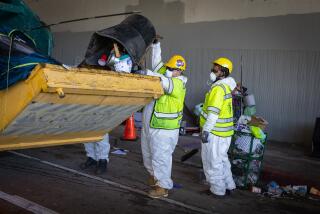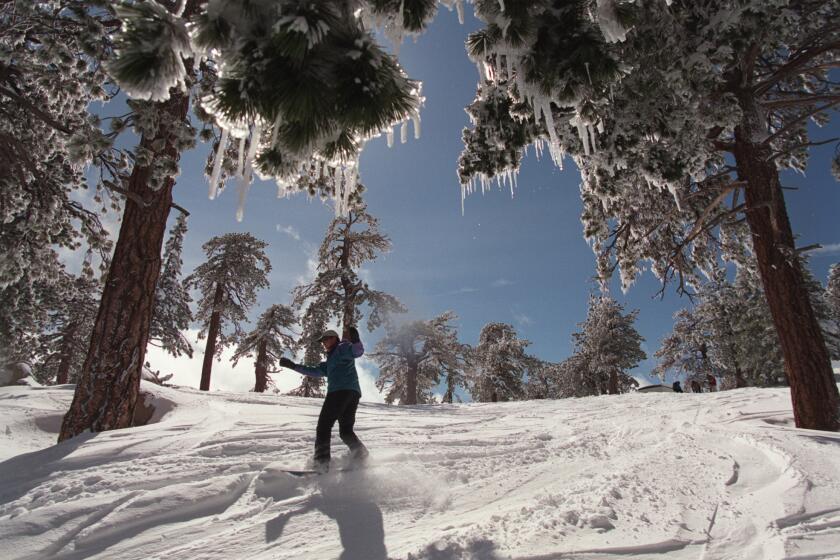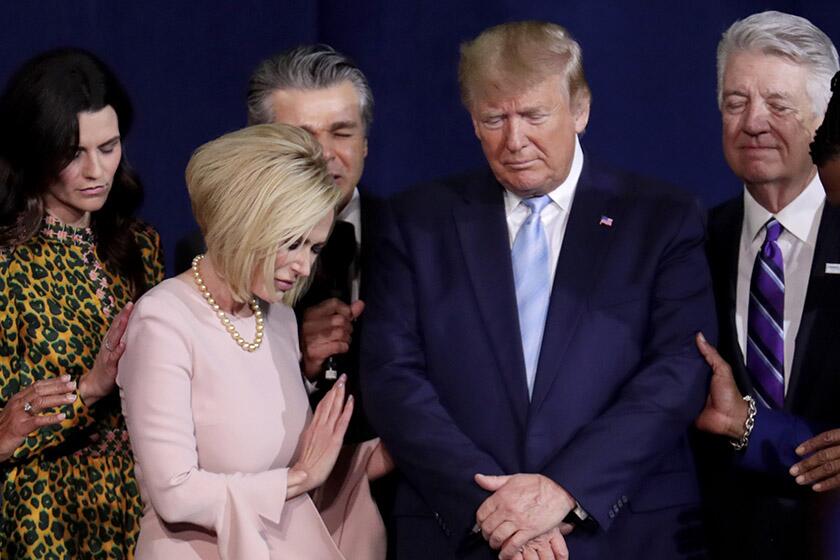Opinion: Pedestrian bridge to keep upscale tenants from the homeless? Bad idea.
In the wake of the decision by the Los Angeles City Council to allow a controversial private pedestrian bridge over Temple Street downtown between two sections of an apartment complex under construction, I’ve been thinking a lot about how people walk around this city.
Of course, it’s no longer true that “nobody walks in L.A.,” as the ‘80s band Missing Persons sang. (And where are they walking and singing these days?) Hollywood and downtown have become hubs of walking and bicycling as both areas become denser with housing and eateries and stores and parklets.
But much of the walking in this city of cars is done in protected enclaves of commercial activity: think the Grove and Universal CityWalk. Even Hollywood Boulevard (at least during the day) and Rodeo Drive in Beverly Hills have a certain insularity by virtue of being havens of tourist foot traffic.
And that seems to be what the developer of the Da Vinci apartment project wants: a little cocoon of safety for his tenants as they travel between the two buildings of the complex, which will sit on either side of Temple Street near the 110 Freeway. Apparently, the developer doesn’t trust that this portion of downtown has gentrified as much as other parts and has become dense enough with upscale apartment-dwellers and workers to provide a buffer of sorts from the homeless people who live in the shadow of the freeway.
Sure, no one wants the danger and uncertainty of walking a desolate sidewalk late at night, whether it’s Temple Street downtown or San Vicente Boulevard in Brentwood. But there is a certain risk in building in a very urban part of town. And developers have been doing it successfully all over downtown for years -- opening loft buildings and restaurants and stores -- without pulling up the sidewalks behind them and laying down moats and erecting drawbridges. People started patronizing Pete’s Cafe on 4th and Main years ago when going there meant parking and passing homeless encampments and sometimes being panhandled while sipping wine on the outdoor patio. A security guard on the corner kept watch and conveyed a sense that someone was on the lookout.
In fact, living downtown means -- wait for it -- living with everything and everyone downtown. And until the city can house everyone, that means homeless people.
Ironically, building the bridge over Temple will probably ensure that homeless people stay there (much to the dismay of the developers, I imagine) because it will create a two-tier sidewalk of sorts -- the lower level for homeless people, the upper level for middle-class people. On the other hand, I’m not suggesting nixing the bridge and then shooing away the homeless to some other desolate waystation. The solution here, challenging as always, is public health outreach to the homeless and urging them into housing.
It would be great to see this apartment complex built without the bridge but with the necessary street-level enhancements -- lighting, cafes, private security people if necessary -- to make the street warm and inviting and bustling. That would make it a block worth walking.
More to Read
A cure for the common opinion
Get thought-provoking perspectives with our weekly newsletter.
You may occasionally receive promotional content from the Los Angeles Times.







